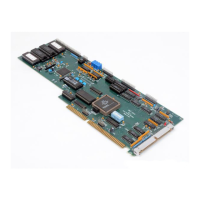142 • Chapter 10 Theory of Operation DMC-1000
A(s) = L(s) G(s)
Now, determine the magnitude and phase of L(s) at the frequency ω
c
= 500.
L(j500) = 0.3175*10
7
/[(j500)
2
(j500+2000)]
This function has a magnitude of
|L(j500)| = 0.00625
and a phase
Arg[L(j500)] = -180° - tan
-1
(500/2000) = -194°
G(s) is selected so that A(s) has a crossover frequency of 500 rad/s and a phase margin of 45 degrees.
This requires that
|A(j500)| = 1
Arg [A(j500)] = -135°
However, since
A(s) = L(s) G(s)
then it follows that G(s) must have magnitude of
|G(j500)| = |A(j500)/L(j500)| = 160
and a phase
arg [G(j500)] = arg [A(j500)] - arg [L(j500)] = -135° + 194° = 59°
In other words, we need to select a filter function G(s) of the form
G(s) = P + sD
so that at the frequency ω
c
=500, the function would have a magnitude of 160 and a phase lead of 59
degrees.
These requirements may be expressed as:
|G(j500)| = |P + (j500D)| = 160
and
arg [G(j500)] = tan
-1
[500D/P] = 59°
The solution of these equations leads to:
P = 40cos 59° = 82.4
500D = 40sin 59° = 137.2
Therefore,
D = 0.2744
and
G = 82.4 + 0.2744s
The function G is equivalent to a digital filter of the form:
D(z) = 4 • KP + 4 • KD(1-z
-1
)
where
KP = P/4
and
Artisan Technology Group - Quality Instrumentation ... Guaranteed | (888) 88-SOURCE | www.artisantg.com

